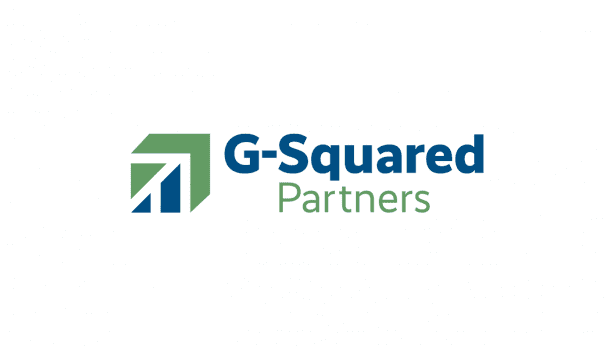G-Squared Partners: The Outlook for 2022 – Searching for Stability Post-COVID

We have all been hearing this for months now: the economy is facing inflation, severe supply problems, and labor market pressures. Costs are rising, not because of “too many dollars chasing too few goods,” but because (1) goods are taking forever to get to where would-be buyers are located, so people are over-ordering, stockpiling, and paying more, and (2) employers have to pay more to attract and keep workers post-COVID.
There are no easy fixes – supply chain snags are likely to be with us well into the middle of next year, and the labor market may be undergoing long-term changes. In short, instability is high.
To help business owners prepare budgets and forecasts for the coming year, we summarize the forces that are likely to have a substantial impact on sales and profitability as we move into 2022.
Digging into Supply and Demand
Costs for many types of goods (but not necessarily for services) are going up, producing blaring headlines about scary-looking inflation at the consumer level. How should companies factor this into next year’s forecasts and budgets? It is important to understand why costs are going up to assess whether or not they are likely to stay high. Cost is, of course, a function of supply and demand.
On the demand side, for roughly 18 months consumers were not able to spend much on vacations, entertainment, and dining out. So, they used their unspent dollars to go on a shopping spree, buying everything from electronics to appliances to new homes. But is this increased demand for goods likely to persist? We can only buy so many laptops, refrigerators, and houses.
In our view, demand is unlikely to continue at its current pace for much longer. While retailers are understandably concerned about keeping shelves stocked, that is more of a reflection of supply chain bottlenecks (we turn to that next) than a permanent increase in demand.
We advise businesses to be careful about stockpiling supplies, especially at high prices. Similarly, be wary of producing in high quantities, because when buyers are “caught up” in terms of their purchases, demand is likely to settle down (or even collapse). That would result in bloated inventories some months from now, putting a strain on cash flow.
Read More: Cash Flow 101: Tips for Management, Projection, and Long Term Improvement
Now we look at the supply side of the equation. The supply chain issues that are pushing costs up are daunting: reduced production in countries where COVID-19 vaccines are still hard to get, container ships that wait weeks to unload, shipping costs that are multiples of what they were in 2019, a lack of warehouse space, and a shortage of truck drivers, many of whom have found other, more stable jobs.
All of this means it is taking longer than usual to turn inventory into cash, which should be factored into a 2022 business forecast. Keep in mind that any forecast about how a supply chain may or may not function will be highly uncertain. We simply do not know how long it will take to unsnarl this mess.
We recently listened to a great podcast (Odd Lots, from Bloomberg) that illustrates the complexities of supply chain problems by focusing on the lumber market. Lumber prices rose to record levels in the spring of 2021, then plunged a few months later. Why? Metal trusses. Huh? Homebuilders had been buying lumber in large quantities to keep up with the big demand for new houses and remodeling projects. That pushed prices to new highs. But, due to supply chain problems, builders could not get their hands on the metal trusses that support the beams that hold up a house. This greatly slowed construction, so builders stopped buying lumber and prices tumbled.
The moral of the story: you need to understand the supply chain for your product, and for goods that your product depends on to be useful to your customers.
Labor Market Shifts
No doubt about it – there is a worker shortage. When the school year started and enhanced unemployment benefits ended, forecasters expected people who had stopped working during the pandemic to return to the workforce. However, the labor force participation rate – the percentage of the working-age population that is working or seeking employment – has stayed low.
Early retirement, stay-at-home moms, immigration restrictions
According to the Kansas City Fed, 3.6 million people retired from February 2020 to June 2021 – that is 2.4 times greater than the 1.5 million that would have been predicted pre-pandemic. Many people who retired early because of the pandemic have chosen not to come back.
Many women involuntarily left the workforce when their children’s schools adopted remote learning, and a surprising number of them have not returned. Of the 1.1 million workers over age 20 who dropped out of the workforce, 80% are women, according to the National Women’s Law Center. Separately, estimates show that the number of adult foreign workers or work-eligible immigrants in the U.S. has declined by about 1.2 million, due to restrictions imposed during the pandemic.
The Great Resignation
The media have been reporting on this for a while now: large numbers of employees are leaving their jobs without having another job lined up because they are confident they will be able to find work when they want to. To attract and retain employees, companies must evaluate their wages and benefits to make sure they are competitive, factoring higher costs into the budget.
While more people may return to the workforce over the coming months, there is also a demographic shift underway: the U.S. population is aging, which means there will be fewer working-age people to fill the jobs that are needed to keep the economy humming. Until companies figure out ways to boost productivity, employees will have more power to demand higher wages and better working conditions.
CEOs should assume it is going to cost more to find and retain employees; that may mean spending more for recruiters, in addition to raising salaries and hourly wages as well as benefits.
Turnover is expensive, so consider ways to increase employee loyalty. Take an honest look at your workplace culture. Are you driving your people too hard? They have alternatives. You may not have room in the budget to offer tuition reimbursement, but weigh the costs and benefits of allowing a parent to leave an hour early once a week to coach his kid’s soccer team, or being supportive when an employee wants to accompany an aging parent to a doctor’s appointment. Ask yourself, would your employees recommend your company to friends who are looking for work?
Increase prices or hold steady?
A big question business owners face moving into the new year is whether or not to raise prices to offset higher costs. What are your competitors doing? If you raise prices while your competitors hold steady, your margins will hold up but you may lose market share.
On the flip side, in some industries businesses have been able to raise prices by more than enough to cover the increase in their costs. Talk to your suppliers about what they are hearing about buyer sensitivity to price changes in their part of the supply chain and future industry prices – that can help with your decision.
Supply chain and labor market pressures will affect how businesses operate in 2022, but conditions will vary across industries. A software company with high margins may be able to absorb salary increases, while a bakery operating on very thin margins may be forced to pass along higher costs to customers. Will you violate any loan covenants if margins decline and debt service coverage suffers?
If so, be proactive in talking with your lenders. Create more than one forecast – in one, assume supply chain pressures ease in four to six months, and in another, not until next fall, and assess the impact on cash flow.
Final Thoughts
The COVID-19 recession and today’s environment are both unique, and “instability” is a common thread. Business owners must anticipate the challenges of strained supply chains and the tight labor market based on industry conditions post-COVID. Plan to revisit your forecast in three months – it will probably change.
At G-Squared Partners, we are experts in making financial forecasts under uncertainty and helping businesses navigate through challenging environments. Contact us or schedule a free, no-cost meeting to discuss how we can help your company
Check out another G-Squared Partners article about Financial Discipline HERE






